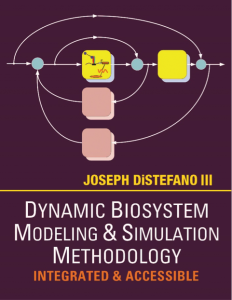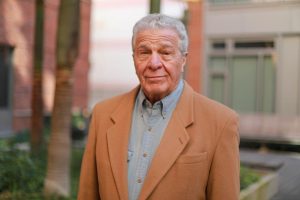

Professor DiStefano’s textbook is uniquely crafted for use in teaching undergraduate students HOW to model and simulate dynamic biological systems. It’s unique because it integrates the biology (domain knowledge) with the quantititative (math, computation and systems engineering) methodology, in a way that is both rigorous and accessible — to contemporary computer science, engineering, math and life science students.
The pedagogy is introductory level, for students who have taken or are currently completing their undergraduate math, introductory biology, chemistry and physics requirements. And it is also useful for graduate students and professional researchers who want a more rigorous treatment of introductory life science math modeling, integrated with the biology.
It uniquely brings together the multidisciplinary pedagogy of these subjects into a single introductory modeling methodology course, crystalizing the experience of an author who has been teaching dynamic biosystems modeling and simulation methodology for the life sciences for more than 50 years. Professor DiStefano maximizes accessibility and “systems-math-biology” integration – without diminishing conceptual rigor. Minimally essential applied math and systems engineering methods are included, along with a synopsis of the biology and physiology underlying dynamic biosystem modeling, all in a modeling pedagogy context.
Dynamic biosystems modeling methodology is presented over 12 distinctive chapters, primarily with systems diagrams and simple differential equations and algebra for expressing them quantitatively, integrated with the biology. Solving and analyzing (quantifying) the biomodels are then accomplished by simulation, using Simulink, a GUI/Matlab toolbox that emulates control systems diagramming, rather than by “coding” the model in a standard programming language. Students see and work with the system model – not the code – a big plus. Higher math and complex analytical solutions are avoided.
Each chapter begins with a list of LEARNING GOALS, to help with both perspective for the chapter material, and retrospective, to measure learning. EXERCISES for the student at the end of each chapter are designed to test and reinforce learning. A SOLUTIONS MANUAL for chapter exercises is available to qualified instructors from the author, as are LECTURE SLIDES and LAB ASSIGNMENTS & SOLUTIONS, for courses that adopt the textbook for student use.
